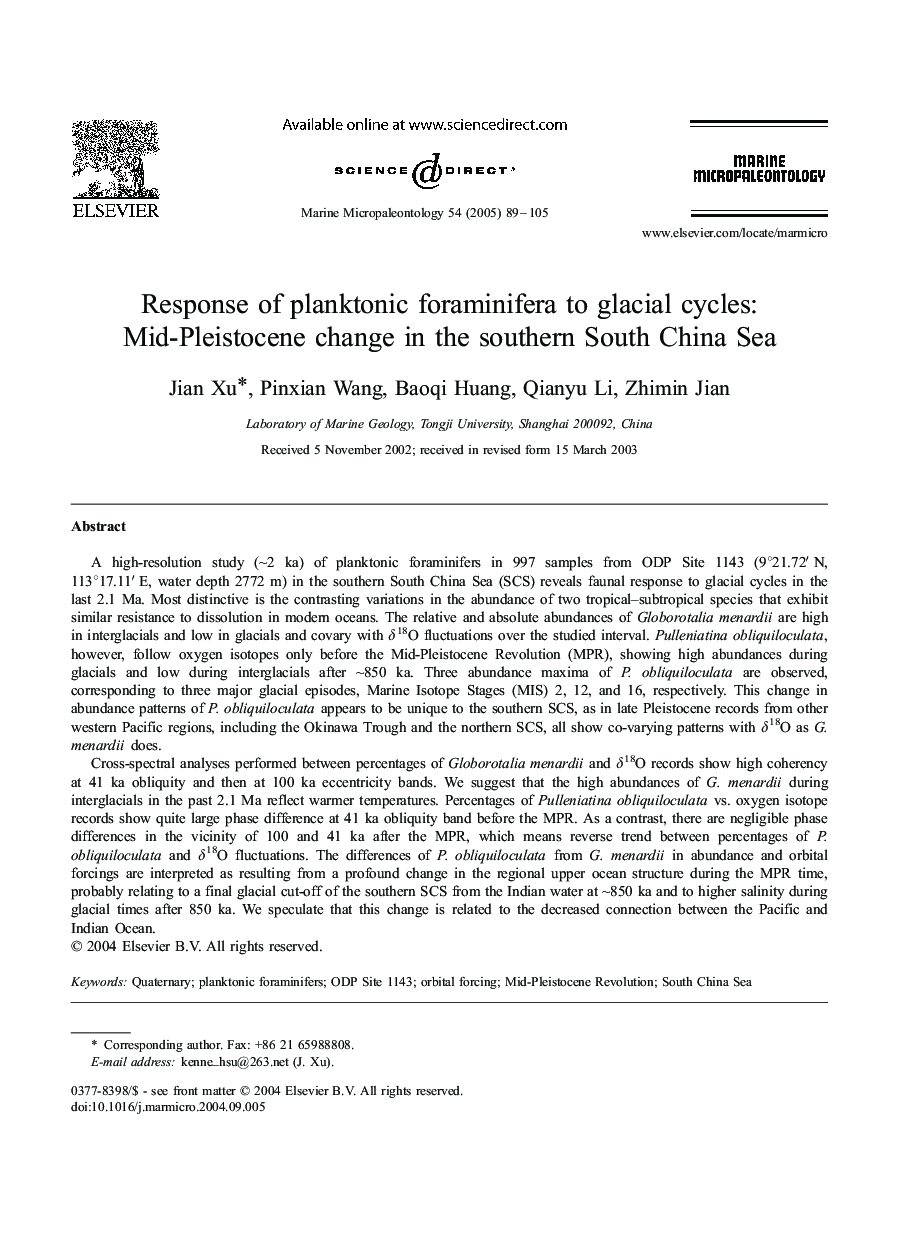| Article ID | Journal | Published Year | Pages | File Type |
|---|---|---|---|---|
| 9539672 | Marine Micropaleontology | 2005 | 17 Pages |
Abstract
Cross-spectral analyses performed between percentages of Globorotalia menardii and δ18O records show high coherency at 41 ka obliquity and then at 100 ka eccentricity bands. We suggest that the high abundances of G. menardii during interglacials in the past 2.1 Ma reflect warmer temperatures. Percentages of Pulleniatina obliquiloculata vs. oxygen isotope records show quite large phase difference at 41 ka obliquity band before the MPR. As a contrast, there are negligible phase differences in the vicinity of 100 and 41 ka after the MPR, which means reverse trend between percentages of P. obliquiloculata and δ18O fluctuations. The differences of P. obliquiloculata from G. menardii in abundance and orbital forcings are interpreted as resulting from a profound change in the regional upper ocean structure during the MPR time, probably relating to a final glacial cut-off of the southern SCS from the Indian water at â¼850 ka and to higher salinity during glacial times after 850 ka. We speculate that this change is related to the decreased connection between the Pacific and Indian Ocean.
Keywords
Related Topics
Physical Sciences and Engineering
Earth and Planetary Sciences
Palaeontology
Authors
Jian Xu, Pinxian Wang, Baoqi Huang, Qianyu Li, Zhimin Jian,
